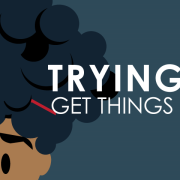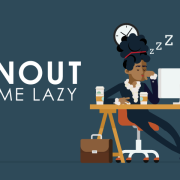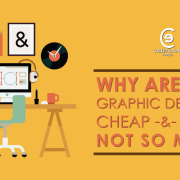Trying to Get Things Done
I have always had a knack for helping people get things done. Not because I did it for them or had some specialized knowledge or insight, but by helping them figure out how to accomplish the goal. The organization, planning and action steps to execute. For example, my youngest sibling talked for years about a desire to move to Seattle, WA. A move in general can be daunting, but moving to a city you have never visited before on the complete opposite coast from where you currently reside is especially daunting.
We were talking one day and his desire to move to Seattle came up again and I asked him what was stopping him from making that a reality. He told me that he didn’t really know where to start and how to make it happen. It just was something he had always wanted to do and dreamed of, but it was also something he wasn’t sure could ever happen. I told him that if he was serious about making the move, I would help him make it happen. I could help him get this thing done.
I started by figuring out what all the needs were to make a move happen, and I created a six-month plan of execution. For six months I gave him weekly “homework” assignments that included research, action steps to complete and a savings goals for the week. By the end of the six months, he would be living in Seattle and would have a small cushion of savings to get him started.
It worked. He moved to Seattle and has been there now for about two years.
He’s not the only one that I have done something like this for. I have a friend that told me I should start another business to help people get things done. Actually his exact words were to help people do sh*t and get their life together. 🙂
So what’s the problem?
My problem is that while I seem to be able to help everyone else, I can’t seem to help myself. Yup, Colleen the supreme planner, organizer and person with the laser focus, can’t help herself. I know what I want. I know what I want to do. I know where I want to go. I also know that I have been approaching it all with an ADD, unfocused and frenetic methodology. I need to take the same steps that I use with everyone else and apply it to myself.
Step One:: Focus
I am easily distracted, primarily because I am ADD. Although people with ADD have a difficult time focusing, we also have an amazing ability to laser focus in on something. When we are laser focused, everything around us gets drowned out. We actually can come across as rude, because if you try to distract an ADD person that is laser focused on something, they may be dismissive or scowl at you. I’m the scowling type. I’m not mad, it just can take me a few seconds to come out of the place I was in and refocus on you. I am literally in a different world or space when I am laser focused on something.
In order to attempt to do any task, I have to be focused. I had to learn how to trigger my laser focusing ability. I call it one of my “super powers.” If it’s easy for you to focus on a task, then you can skip on to the next step. If focusing is difficult for you, but you are not ADD try a few of these tips:
- Turn your devices on “do not disturb” or silent, but without vibrate. It is easy to be distracted by dings, beeps and other chimes and it can be difficult to ignore or resist the urge to check your device (phone, tablet, etc) every time you hear it.
- Set specific interval times to check and respond to emails. If you are running a digitally based business like I am, you get a lot of emails. Checking and responding to emails takes time away from other tasks. It can be tempting to stop what you are doing, read and respond every time you receive a notification that you have new mail. I keep my notifications on, but you may want to turn them off and set a schedule to check your email. It could be every other hour, at three specific points during the work day, or whatever works best for your needs.
- Set your environment up for success by removing distractions. If you need a quiet room, take out anything that makes noise. If you need a specific temperature in the room, change the thermostat. You get the picture.
If like me, you are ADD or ADHD, then you have the ability to laser focus. Think about things that you do or activities that you engage in that you can be so focused on that when someone calls your name, you don’t hear them at first. Also think about times that you were focused on something and felt confused, annoyed or frustrated when someone distracted you in some way. See if you can find a correlation between the type of activity, actions or even environment (sounds, temperature, place, etc) when you were laser focused. Finding the commonalities in those situations will help you find a “trigger.” A trigger for me, is music. I can laser focus on my work, when I play music. I focus even more when that music matches my mood. I have a friend that uses music to trigger her laser focus, but it has to be music without words.
Experiment and find what works best for you.
Step Two:: Work Backwards & Reverse Engineer the Goal
The way I approach a big project, goal or idea is to look at the overall picture and then break it down into pieces. I think of it like building blocks or legos’ pieces. You can put many pieces together to form an overall shape. I look at my goal and try to figure out what pieces are needed to compose the shape (goal). For me, the easiest way to do that is by just taking one step backward at a time.
For instance, with my brother I knew that to move, you have to have somewhere to go or move to. I knew that he was moving to Seattle, but that was a bit too general. He would need a place to stay once he made it to Seattle. Figuring out lodging became the first step backward from the goal of moving to Seattle. I wrote lodging down as a piece and then continued to work backwards. Once I had worked all the way backwards down to his current living situation and location, I went back through the list of pieces and broke them down into smaller pieces.
With lodging, I determined that there were several other pieces that made up that one piece. Location; where in Seattle would be ideal for him to live? Cost; how much would it cost and what could he afford?
I continued to break the pieces down into smaller ones until I could not break them down any further.
Step Three:: Organize & Set a Timeline
The next step to get things done, was to take all of the pieces of the puzzle and organize them and set a timeline. To a certain degree, the process of working backwards and figuring out those pieces had created umbrella categories that I could use to group pieces together under. Lodging became an overall category that encompassed several pieces. Transportation and Employment were a couple other categories that I organized pieces under.
For the timeline, I had to do a bit of which comes first, the chicken or the egg? Elements of one category needed to be in place in order to accomplish goals in another category. Based on this, I organized the categories in a sequential order and then applied it against my 6-month timeline. I started with what needed to happen each month and then broke that down further into each week of that month.
Step Four:: Get Things Done
Once I had the timeline, creating the action steps to take was easy. Because the pieces of the puzzle had been broken down into really small specific pieces, all I had to do was list out what needed to be done (the steps to take) for each week.
With my brother and his goal, I was the keeper of the complete plan and I only gave him pieces of it one week at a time to keep from overwhelming him. I think that when it comes to myself and the goals I want to accomplish, I may be overwhelmed by having the complete picture. I am creator, keeper, overseer and executer of the plan. With my brother and others that I have helped, I am only the creator, keeper and overseer or; I am just the creator of the plan.
To be honest, maybe I need to use all of these steps to create a plan for me to better execute my goals. As I was writing this post, I had an idea that I should probably take my plans and break them up into weekly or monthly homework assignments like I did for my brother. I’m also thinking that I could probably separate them into Word documents and keep them in separate folders. Then, maybe if I only look at one assignment at a time, I will not get overwhelmed by the full plan itself. Yeah…who said writing wasn’t therapeutic?
I think I may have just solved or found a solution to my own problem!
Colleen Eakins is a dynamic and creative individual that possess a knack for great design. With over 15 years of experience in the field of graphic design, Colleen is able to effectively brand her clients with great design pieces. Her motto is: “Anyone can make a pretty picture, but is it effective? Will it make your customer buy your product or use your services? My design tries to answer with a YES!”






